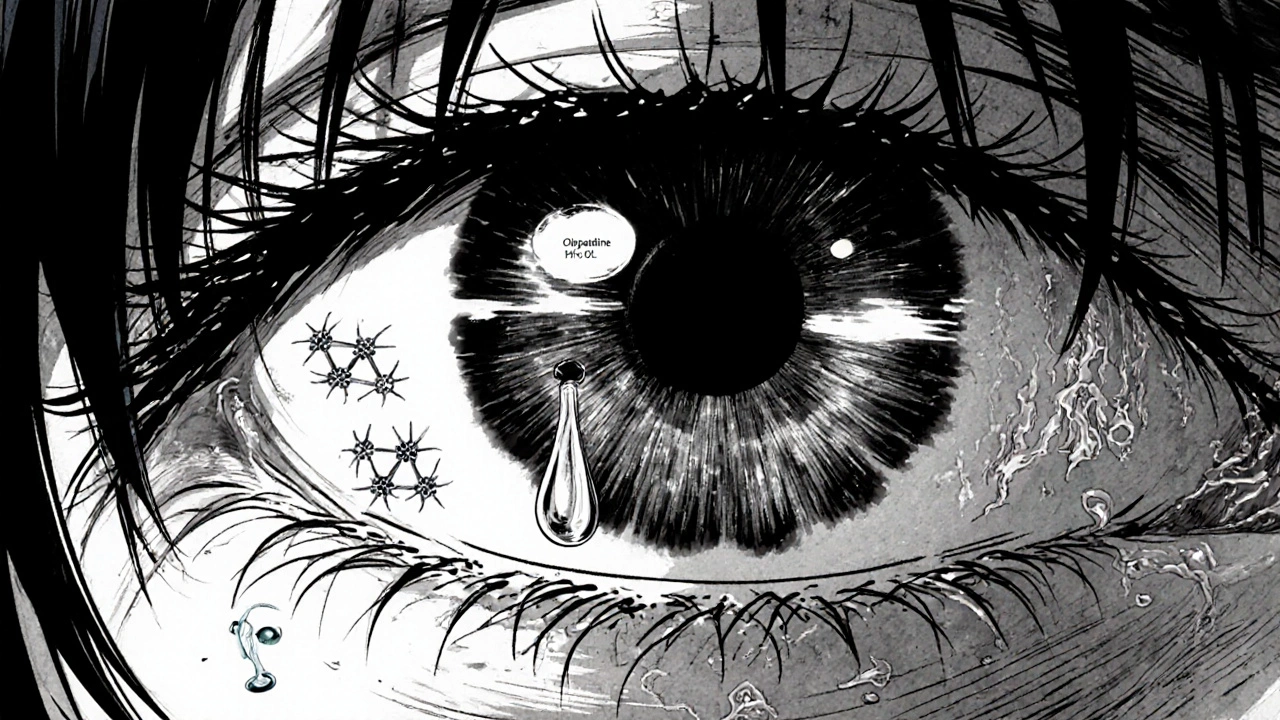Olopatadine HCL: What It Is, How It Works, and What Alternatives Exist
When your eyes itch, water, and turn red from pollen, dust, or pet dander, you’re likely dealing with Olopatadine HCL, a prescription and over-the-counter antihistamine used specifically for eye allergies. Also known as olopatadine hydrochloride, it works by blocking histamine in the eyes—stopping the itch before it starts. Unlike oral antihistamines that make you drowsy, Olopatadine HCL targets the problem right where it happens: your eyes.
This medication isn’t just a quick fix—it’s designed for regular use. People with seasonal allergies, perennial allergic conjunctivitis, or even those reacting to indoor irritants like mold or cleaning products often rely on it. It’s not a steroid, so long-term use is generally safer than corticosteroid eye drops. But it’s not the only option. Other eye allergy treatments like ketotifen, a dual-action antihistamine and mast cell stabilizer found in Zaditor and Alaway, work similarly but may have different onset times or side effects. Then there’s antazoline, often paired with naphazoline in older OTC drops, which shrinks blood vessels but doesn’t stop the root cause like Olopatadine does.
What makes Olopatadine HCL stand out? It doesn’t just relieve symptoms—it helps prevent them. That’s why doctors often recommend it for people who know their allergy triggers and want to stay ahead. It’s also used in both adults and children over three years old, making it one of the few eye allergy meds with broad age approval. But if you’ve tried it and still get red, itchy eyes, you’re not alone. Some users report mild burning or a bitter taste after use. Others find it less effective on severe cases, which is why many look toward alternatives like epinastine, another antihistamine with strong anti-inflammatory action, or even newer options like bepotastine, a newer-generation antihistamine with longer-lasting relief.
The posts below dive into exactly these kinds of comparisons—how one medication stacks up against others, what side effects to watch for, and when to switch. You’ll find real breakdowns of eye allergy treatments, how they differ from oral meds, and why some people swear by one brand over another. Whether you’re trying to cut costs, reduce irritation, or just find something that actually works, the guides here give you the facts without the fluff.
Olopatadine HCL and Headaches: Key Facts & Risks
Explore how Olopatadine HCL works, why it may trigger headaches, who’s at risk, and practical tips to manage side effects safely.
read more